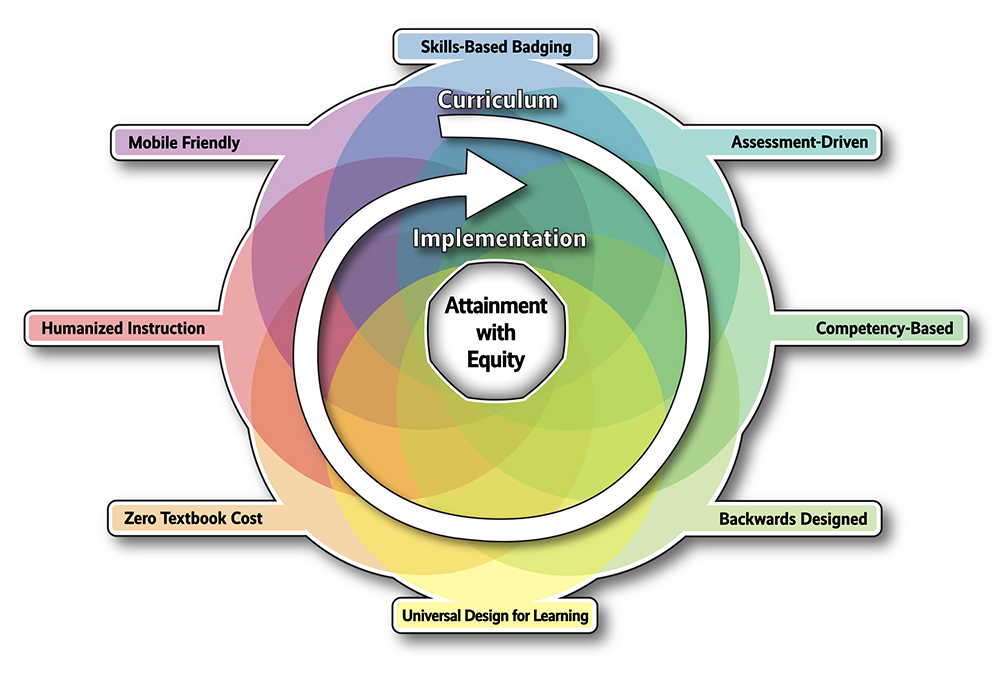
Attainment With Equity
Contact Me
What is AWE?
Click the image above, or right here, for a closer look
Attainment With Equity (AWE) is a synthesis of several modern (some more so than others) ideas that have merit on their own, but in combination become even more powerful. The mindful combination of these ideas as a unified, iterative practice results in a framework for helping all students find success in the learning environment.
This model is intended to be:
- Iterative - Within each area, there are varying levels of implementation that can be built upon and improved with each teaching of the class. There is space within each area to make small, mindful improvements over time, to experiment and hone the teaching and course design.
- Connected - There are connections and sometimes even areas of overlap between the areas. As one area is implemented, adjacent areas are often supported or improved. It is integrated by design.
- Outcomes-Oriented - The model supports student learning with the idea in mind that at some point, they will need to go out into the world, and successfully convince someone that they have, in fact, learned something useful and significant. By including students in the conversation about the learning outcomes of each course, and giving them tools to express those outcomes, we are empowering students to advocate for their own learning as they seek jobs or further education.
Each Section of the model is presented in more detail through the modules on the right.

Skills-Based Badging
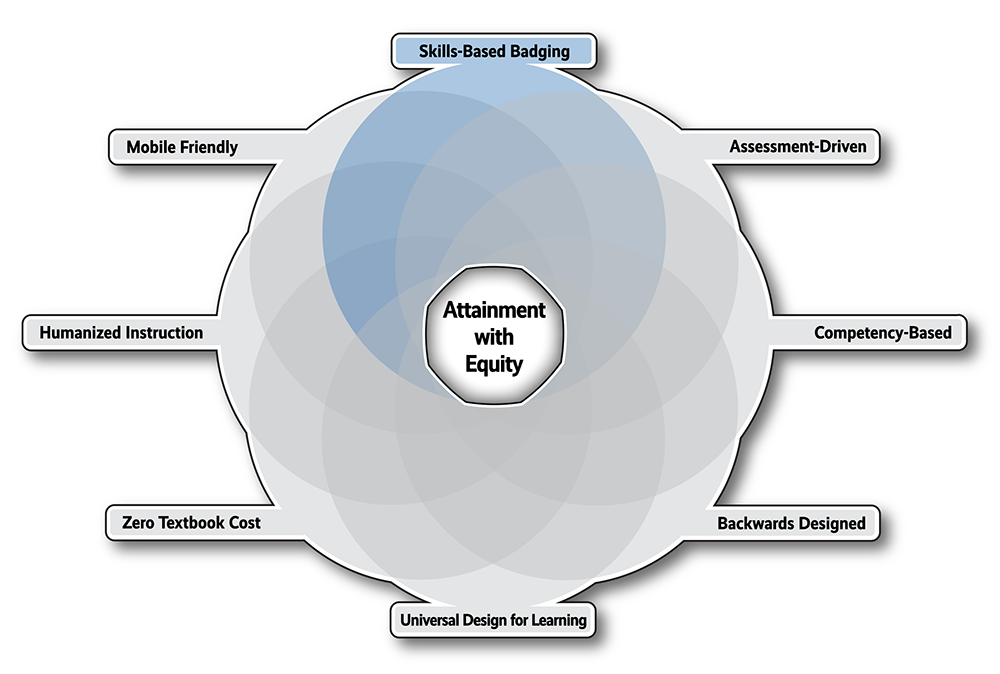
Why Badging?
1. Badges make explicit connections to workplace skills.
2. Badges refine our assessment practice.
3. Badges tie competencies to value.
Here are the key aspects of Skills-Based Badging in this model:
1. Badges Connect to SLOs
2. Badge Skills Connect to Course Objectives
3. SLO Badges Awarded Based on Assessment
4. Course Badges Awarded at Institutional Level
Connecting badges with learning outcomes and authentic assessment provides continuity between what students learn, what is assessed, and what they can take with them into the jobs marketplace.
Competency-Based Targets
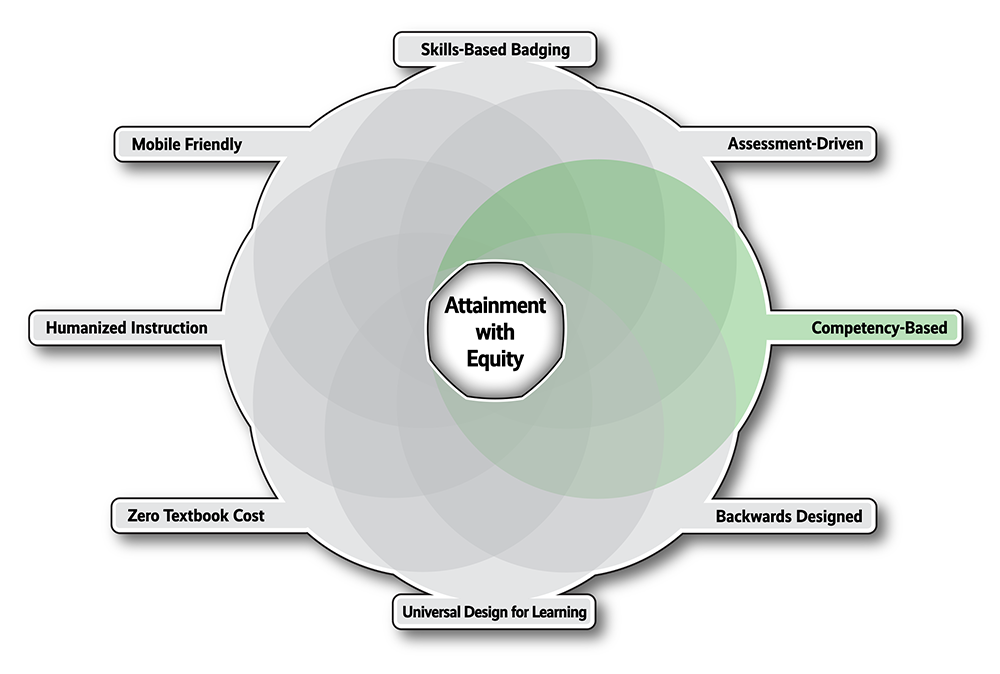
Why Competencies?
1. Grades are inequitable and arbitrary.
2. Competencies reinforce a focus on student attainment.
3. Competencies reinforce authentic assessment.
The critical aspects of the competency-based arm are:
1. Assessment for CompetencyAttainment
2. Flexible Pacing of Learning
3. Credit is Based Exclusively on Competencies
Universally-Designed for Learning
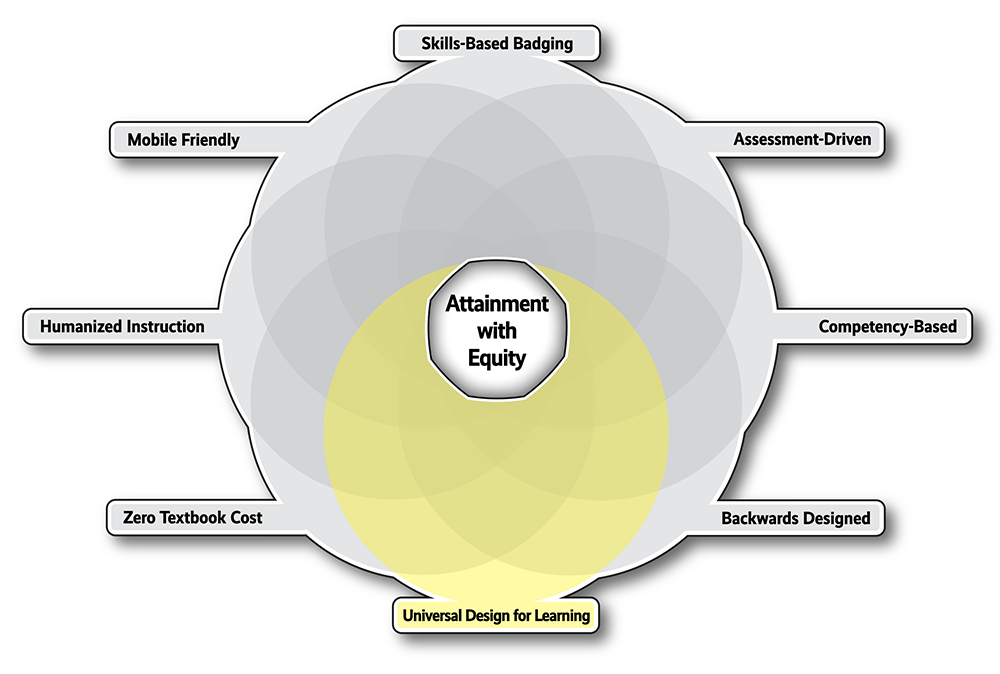
3 Principles of UDL
1. A ective (Why) How do students engage?
2. Recognition (What) How is information represented?
3. Strategic (How) How do students express learning?
Key UDL Connections and Components Include:
1. Explicitly teach engagement.
2. Allow asynchronous learning.
3. Community note-taking.
4. Make materials accessible.
5. Embrace students as teachers.
6. Build a community.
Humanized
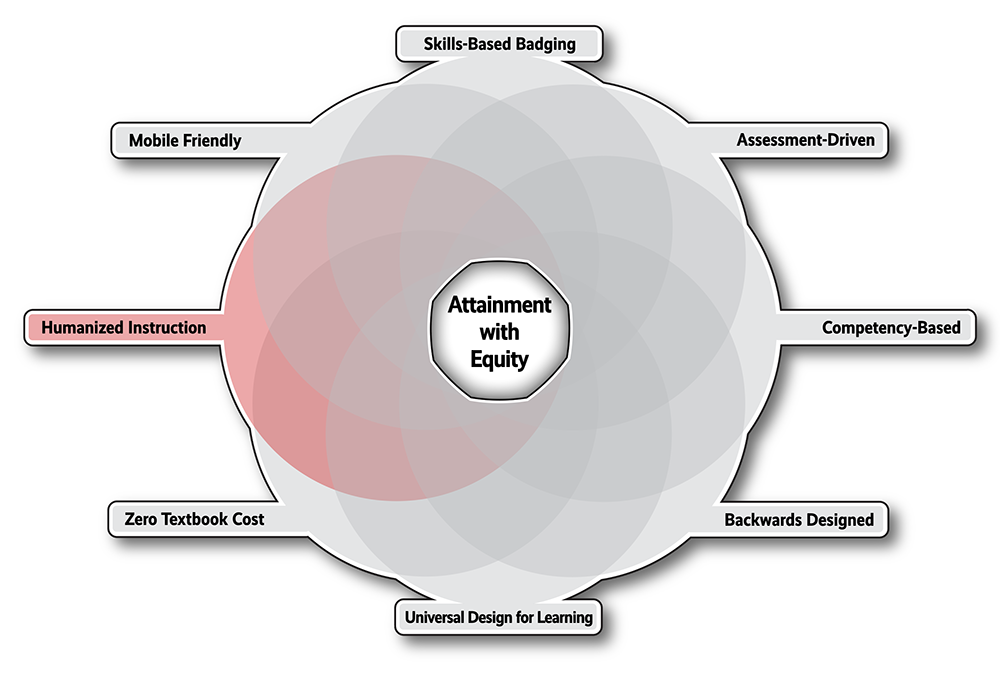
The 4 Humanized Principles:
1. Trust
2. Empathy
3. Awareness
4. Presence
The 8 Key Elements of a Humanized Course Are:
1. Liquid Syllabus
2. Humanized Homepage
3. Getting to Know You Survey
4. Warm, Wise Feedback
5. Self-A rming Ice Breaker
6. Wisdom Wall
7. Bumper Video(s)
8. Mirolectures
Assessment-Driven
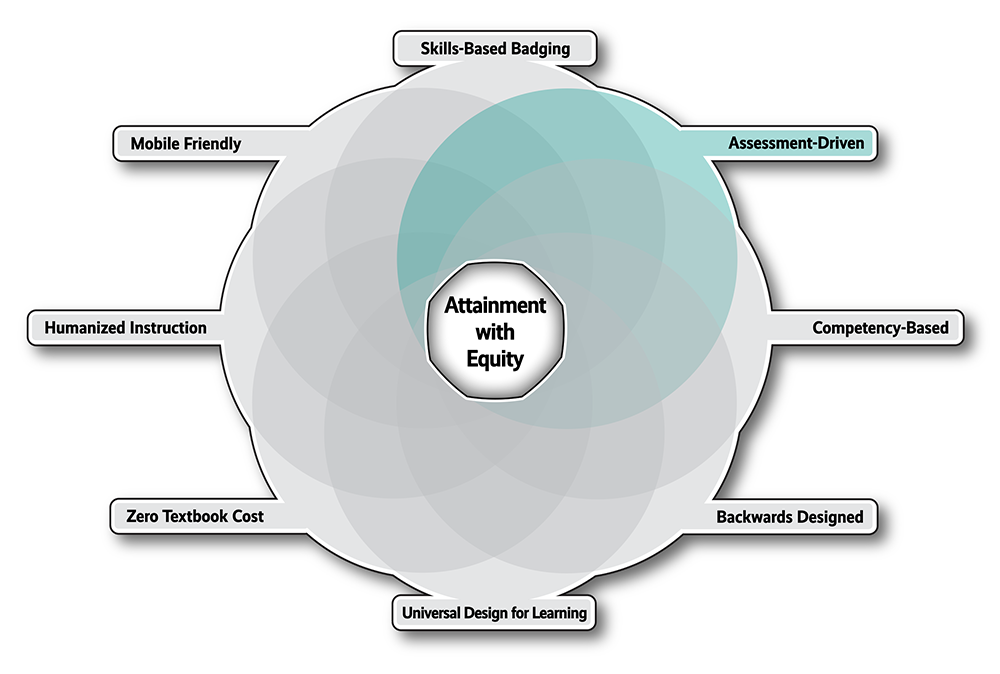
Why Assessment?
1. Assessment focuses our teaching on key learning outcomes.
2. Assessment is the real basis for measuring learning - not grades.
The critiical pieces of the Assessment arm are:
1. Assessments Map to Objectives
2. Objectives Map to SLOs
3. Every SLO/Objective is Authentically Assessed for Every Student
4. Assessment Results are Reflected to Students.
Backwards-Designed
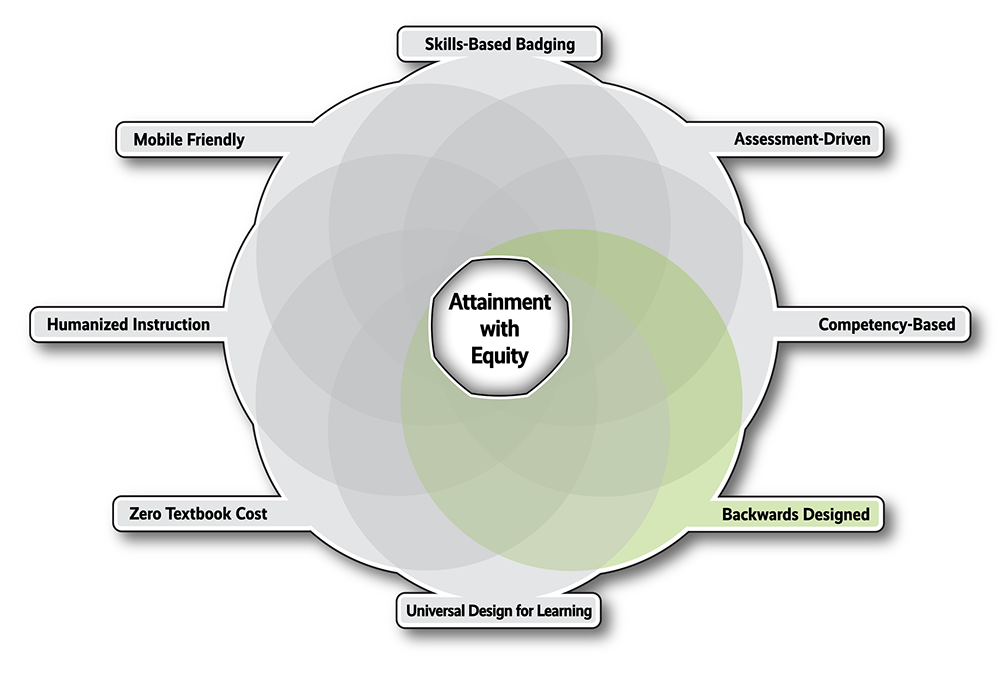
Why Backwards Design?
1. Quality teaching begins with the end in mind.
2. This approach makes explicit connections between SLOs, Objectives, Assessments, and instruction.
Key connections and components of the backwards design process include:
1. Determine Learning Targets SLOs, Objectives
2. Design Authentic Assessments Evidence of Understanding
3. Develop Learning Activities Scaffolding, Sequencing
Zero Cost Textbook
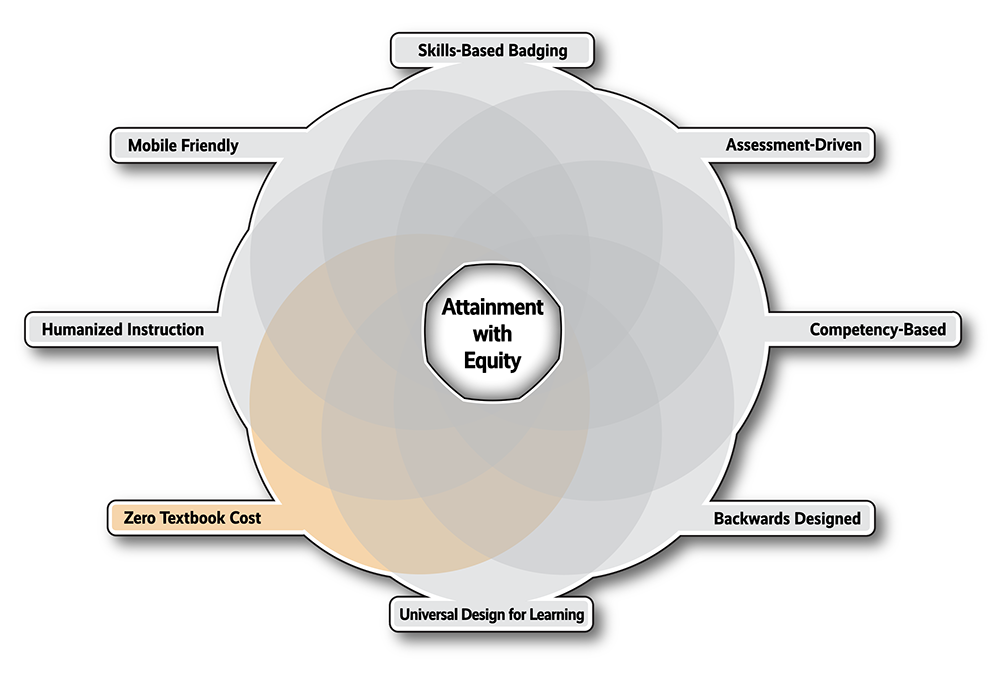
Key Aspects of Building a Free Textbook (or Textbook Free) Course:
1. Doesn’t have to be a “text”.
2. Look for flexibility in presentation.
3. Understand licensing.
4. Collaborations have value.
5. Instructor as curator.
6. Seek institutional support.
Mobile-Friendly
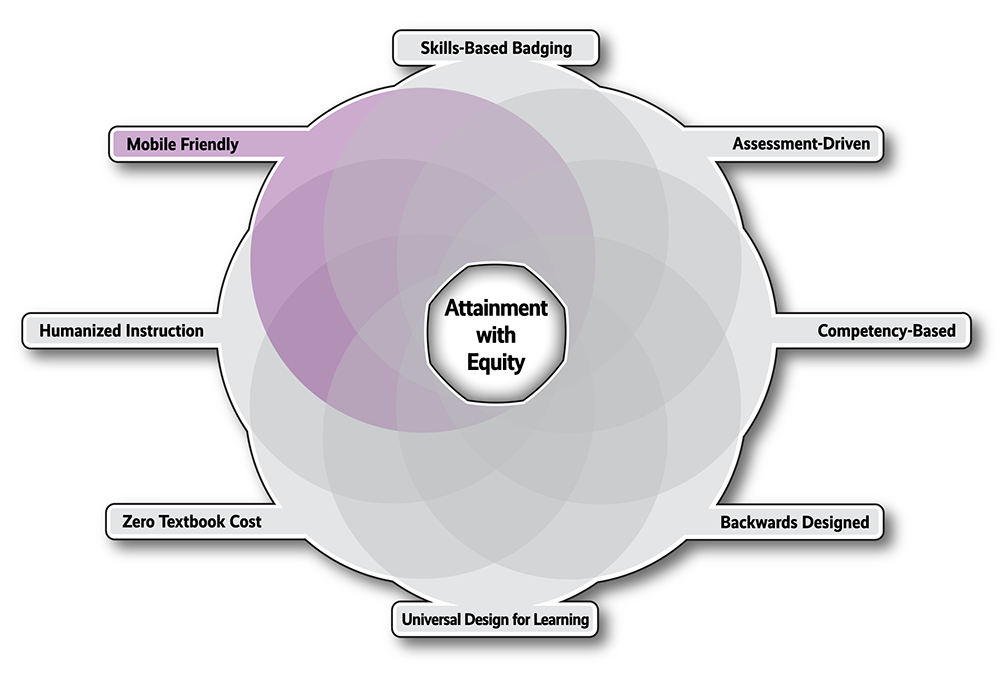
Mobile-Friendly courses are designed with small screens and portable devices in mind. While not every piece of every course can be made available to mobile devices, even some movement in this direction can be a significant benefit to students.
When students can access their course via mobile devices, it opens doors for their learning.
- Students may only have internet access through their mobile devices, and may not be able to learn in classes that are not mobile-friendly.
- Students can learn anywhere, any time, as their availability allows.
There are two domains of basic course design for mobile devices:
1. Course Content: Can students access resources via phone?
2. Assessments & Activities: Can students participate via phone?
